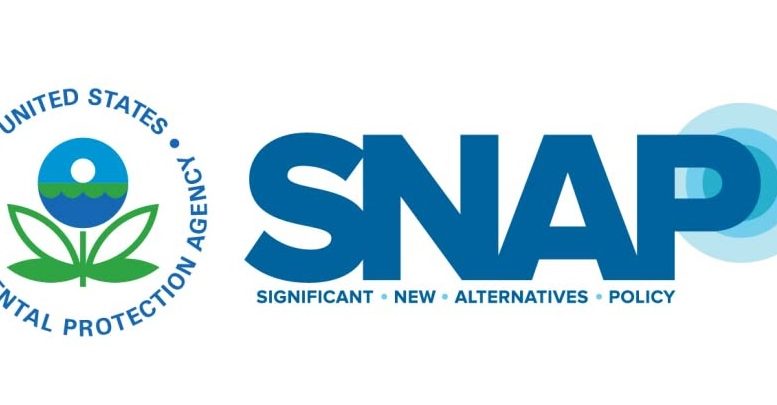EPA Finalizes Rule on Safer HFC Alternatives Under SNAP Program

Washington, DC, 2 July 2015 – The United States Environmental Protection Agency (EPA) took strong action today to ban and otherwise restrict the use of hydrofluorocarbons (HFCs) used in refrigeration, air conditioning, and foam and aerosol products. The EPA rule declares as “unacceptable” various HFCs and HFC-containing blends when used in applications where superior substitutes are now available, with lower overall risk to human health and the environment.
“Today’s action delivers on the President’s Climate Action Plan and the administration’s commitment to acting on climate. And it is in line with steps leading businesses are already taking to reduce and replace HFCs with safer, climate-friendly alternatives,” said EPA Administrator Gina McCarthy in EPA’s press release. “This rule will not only reduce harmful greenhouse gas emissions, but also encourage greater use and development of the next generation of safer HFC alternatives.”
“The President’s climate team is on a roll with their actions to cut HFC at home and abroad,” said Durwood Zaelke, President of the Institute for Governance & Sustainable Development. “The President’s strong actions on HFCs today, give him the credibility he needs to demand that the rest of the world phase down HFCs under the Montreal Protocol.” The next round of negotiations under the Montreal Protocol are scheduled for late July in Paris, with the final Meeting of the Parties scheduled for the first week of November in Dubai.
“The alternatives to HFCs are remarkable.” said Dr. Stephen O. Andersen, Director of Research at IGSD. “For example, HFO-1234yf with a global warming potential that is less than one will replace the current HFC-134a that has a warming potential more than a thousand time higher. The new substitutes are safe for the ozone layer and less damaging to climate and have lower life-time costs when the latest energy efficiency technology is applied.”
HFCs are increasing more quickly in the U.S. than any other greenhouse gas and are increasing global rate of 10-15%. At that rate, U.S. emissions are projected to double by 2020 and triple by 2030.
An HFC phasedown under the Montreal Protocol this year could avoid the equivalent of 100 (87-146) billion tonnes of carbon dioxide by mid-century, and avoid up to 0.5°C of warming by the end of the century. Through a fast implementation of the HFC amendment an additional 39 to 64 billion tonnes of CO2 equivalent could be mitigated. Further mitigation would come from efficiency gains in room air conditioners catalyzed by the phase down of the refrigerants. According to the Lawrence Berkeley National Lab, the climate benefit from improving the efficiency of room air conditioners could save enough electricity to avoid building up to 1,900 medium-sized power plants in the next 15 years.
“Today’s action is a nice book-end to the President’s agreement on HFCs earlier this week with President Rousseff of Brazil, where the two leaders agreed to “work multilaterally in the Montreal Protocol to consider promptly amendment proposals to phase down HFCs.” The agreement with President Rousseff follows earlier agreements the President Obama negotiated with Prime Minister Modi of India and President Xi of China to phase down HFCs under the Montreal Protocol.
“President Obama’s success bringing climate policy to the leader level gives the world a fighting chance for a decent outcome at the climate negotiations in Paris in December," said Zaelke.
